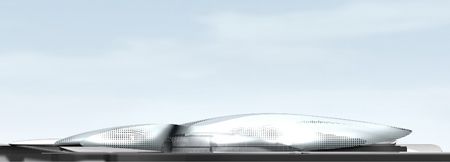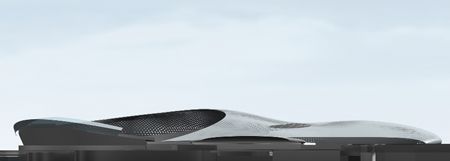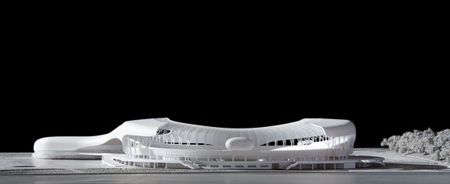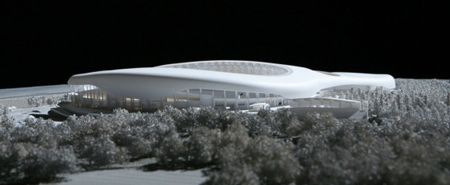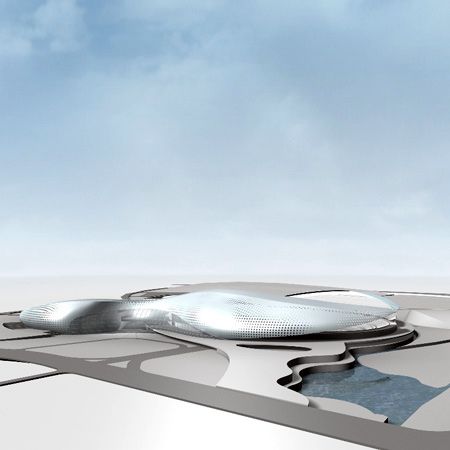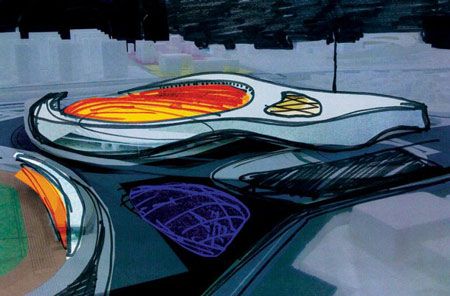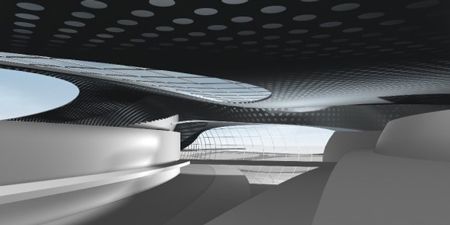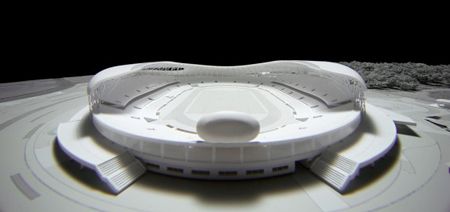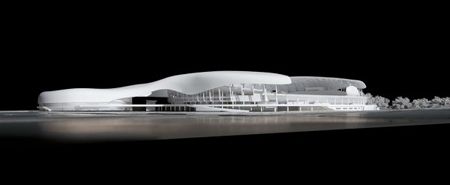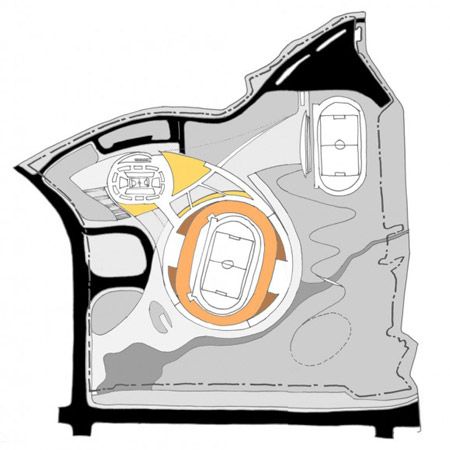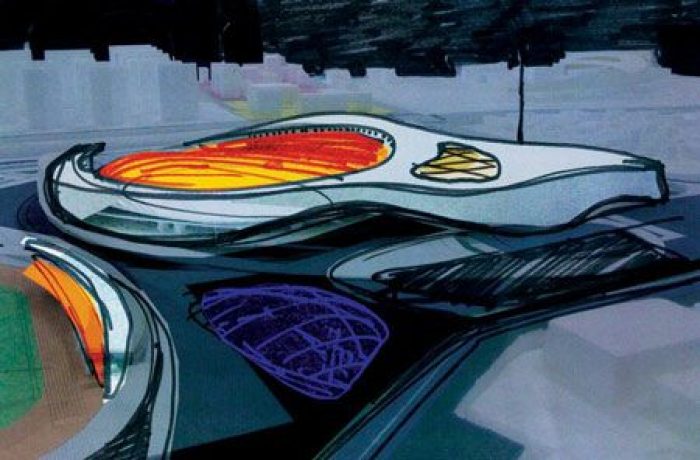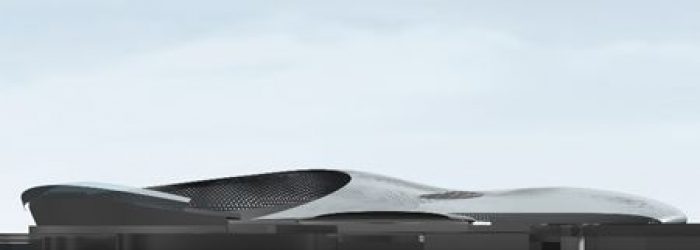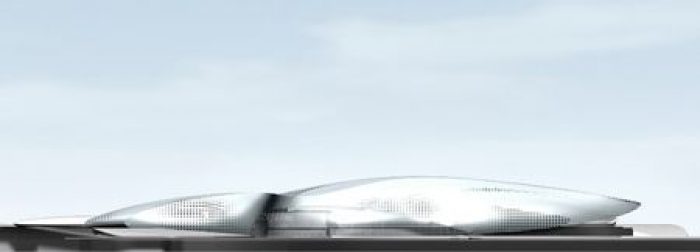This is the Hwaseong Sports Complex for Hyundai/Samsung Consortium. Located in Hwaseong, Korea, and designed by DRDS in collaboration with Junglim, DMP, Haenglim and A&U, it is a stadium that isn’t just a stadium. And it is a sports complex that isn’t a complex in the typical sense. The complex holds the many aspects of program typical to sporting venues, including a 35,000 seat football stadium, a 5,000 seat arena and a 2000 seat practice field. And around all this there are retail and refreshment locations. But what is interesting about the complex is that it is held within one main form. There is no sprawling across the landscape, it is all held within.
The form of the building is one which takes inspiration from nature and the forces of nature, reminiscent of rivers, cloud forms and mountains. It is minimal in its expression- futuristic, state-of-the-art, yet not gaudy. The complex is expected to act as a landmark piece of sports architecture for the region.
The connectivity of the differing venues within the complex give rise to features and aspects not typically found in sporting venues. Between the stadium and arena is the ‘Synergy Zone’. This is a covered plaza which acts as an area of vertical access between the main public concourse and the complex’s retail spaces. It acts as a hub zone, encouraging a sense of place and life which doesn’t rely on an active sporting event. The public are provided with a sheltered gathering place which during sporting events becomes a sort of staging area. Through this, the other most important aspect of sports- retail- is boosted, giving fans an opportunity to shop both before and after sporting events.
Another benefit of the all-encompassing form is unification. Alluding to the way which automobiles conceal all the ‘guts’ underneath a beautiful form, this complex is shrouded from direct view. The complex as a whole is afforded a sense of mystery and an enhanced ‘spectacle of experience’. The curved metal which clads the roof and size walls are punctured by many small openings. These are a modern reinterpretation of the scrims found in traditional Korean buildings and provide for veiled views form the complex’s various concourses.
One final nice touch: seating wasn’t maximized, it was optimized. Size seating was largely favoured because of the better, all-encompassing views which it provides. In accordance, endzone seating was minimized and the building form lowered to provide both views out to the scenic surrounding and to allow views inward from the surrounding neighborhood.
